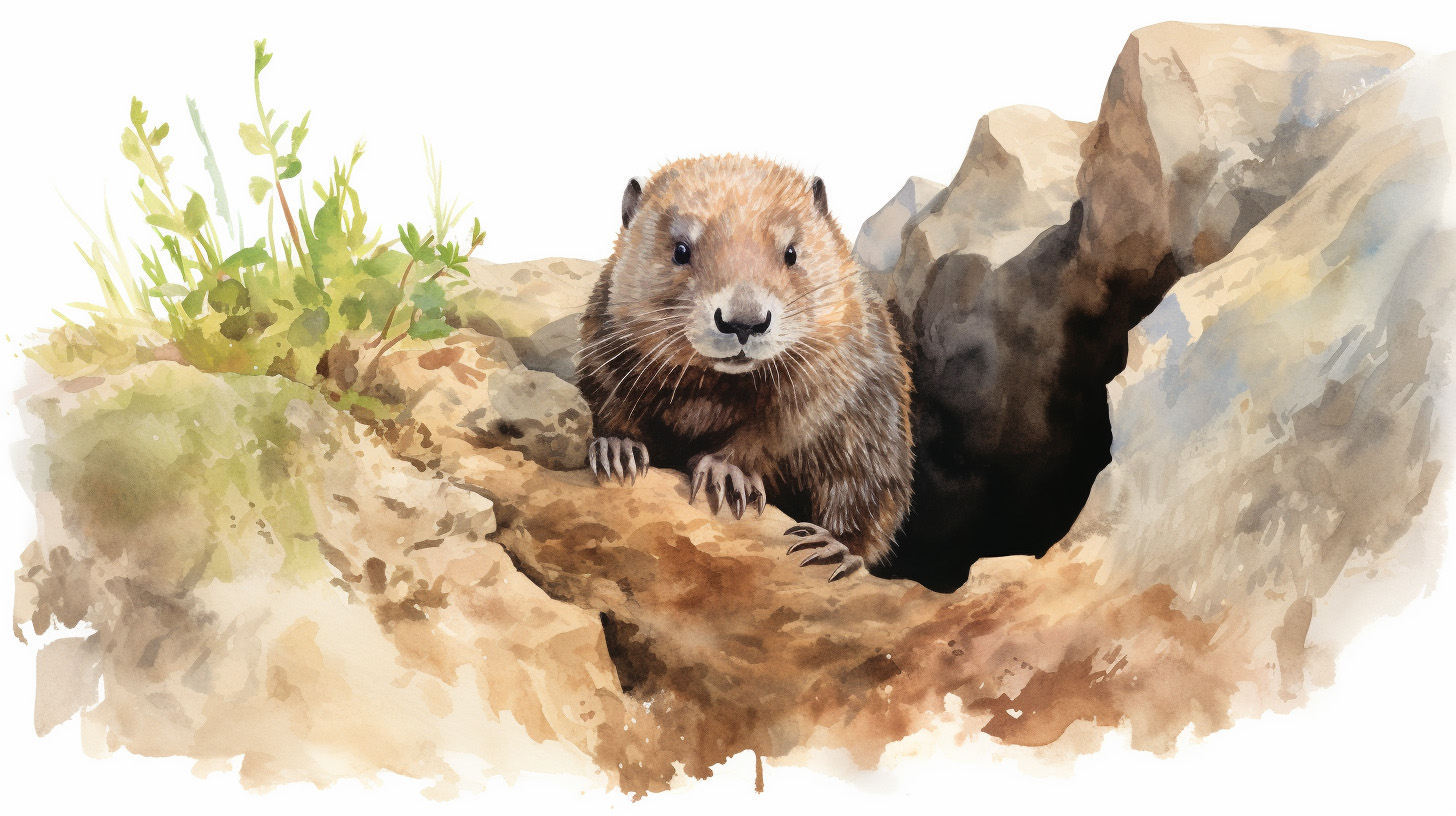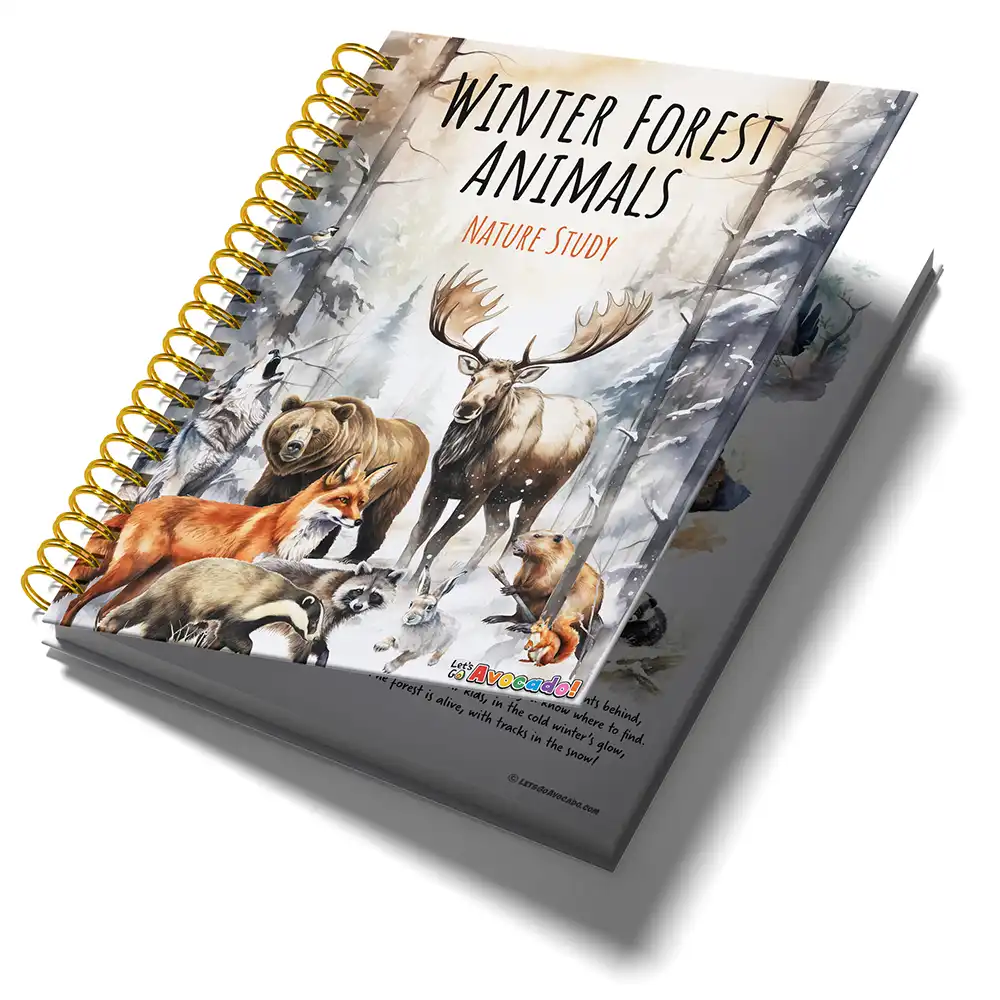This page may contain affiliate links.
Read our disclosure and privacy policy here.
Winter is a time of icy landscapes and chilly winds, a season when most animals either migrateMigration is the regular movement of animals from one place to another, often to find food or better weather. It’s a seasonal trip that many animals take for survival. Learn More to warmer places or struggle to find enough food in the frosty outdoors. But not all creatures face these winter woes head-on. Some animals have an extraordinary trick up their sleeves – hibernationHibernation is a remarkable survival strategy used by some animals to endure harsh winter conditions. During hibernation, these animals enter a deep, prolonged state of reduced activity, characterized by a significant drop in metabolic processes, including heart rate and body temperature, allowing them to conserve energy and survive through the challenging cold months.! Imagine sleeping through the entire winter, waking up when the world thaws and blooms again. But did you know that there are different types of hibernation, each tailored to the needs of different animals? In this article, we’ll embark on a journey to explore the five remarkable kinds of hibernation, meet some incredible animals that practice them, and learn how and why they do it!
Table of Contents
12 Animals That Hibernate In Winter
True Hibernation: The Deepest Sleep
Imagine yourself snuggled up in a cozy bed for months, your heart beating ever so slowly, and your body temperature dropping to a chilly low. That’s what true hibernation is like.
It’s a spectacular survival strategy used by certain animals, and it’s a bit like a super-deep and super-long winter sleep. During true hibernation, these animals go through incredible changes. First, their heart rate drops significantly, going from its usual speed to just a tiny fraction of beats per minute. They also breathe very slowly, and their body temperature plunges, matching the freezing environment around them. It’s as if they enter an extremely deep and restful slumber that can last for weeks or even months. True hibernators, such as the groundhog and the Arctic ground squirrel, often find cozy burrows or snug dens to retreat to. Inside, they rely on stored fat reserves to keep them going through this extended snooze. When spring arrives, they emerge, having saved up a ton of energy and successfully sailed through the winter’s icy grip. True hibernation is a fantastic example of how nature’s creatures adapt and survive in the face of challenging conditions.
Groundhog - True Hibernation
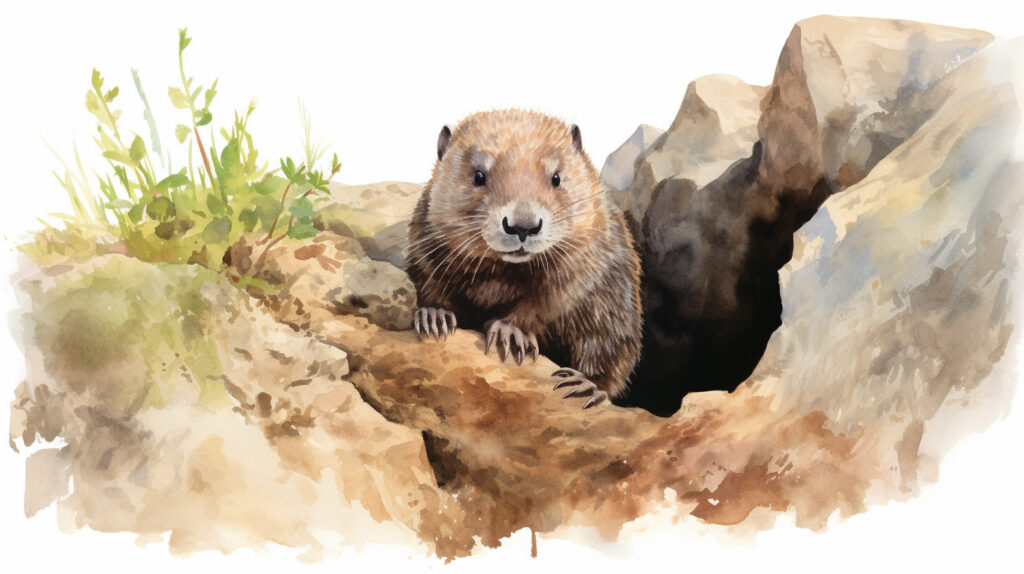
Our first stop on this chilly journey takes us to the groundhog’s cozy burrow. As winter descends, these furry forecasters enter a deep slumber. True hibernators like groundhogs experience a profound drop in their metabolicMetabolism refers to all the chemical processes that occur within an organism to maintain life. It involves the conversion of food into energy, the building and repair of tissues, and the elimination of waste products from the body. rate. Their heart rate plummets from about 80 beats per minute to only 10, and they can survive without eating, drinking, or even eliminating waste throughout the entire hibernation period. Groundhogs rely on stored fat reserves as their primary source of energy during this prolonged dormancyDormancy is a state of rest or inactivity that some living things enter to survive challenging conditions. It’s like hitting a pause button on their usual activities. During dormancy, these organisms slow down their processes, such as growth and metabolism, until conditions become more favorable for them to become active again..
Arctic Ground Squirrel - True Hibernation
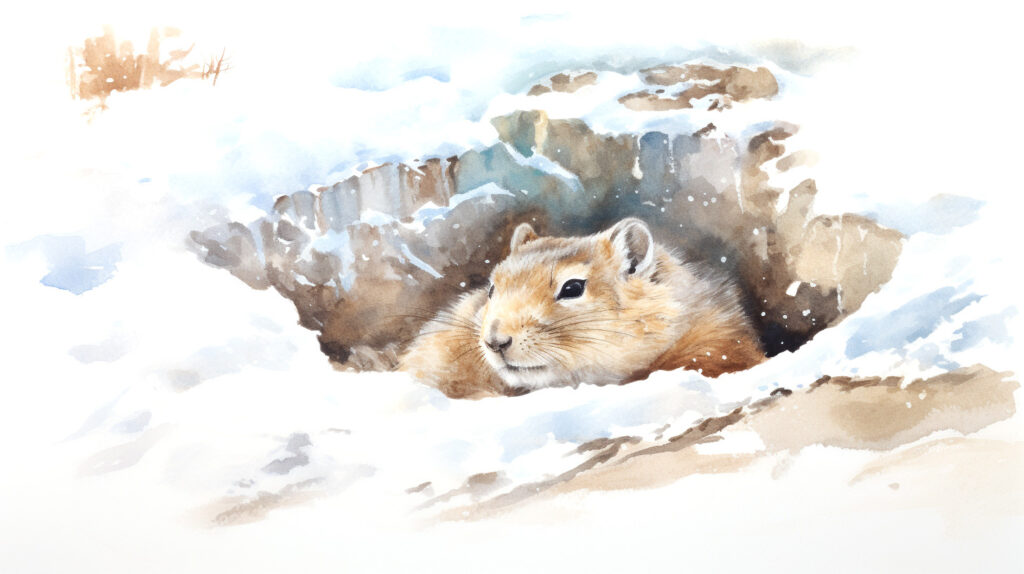
Now, picture an even more frigid landscape, where Arctic ground squirrels brave the bitter cold by hibernating for a jaw-dropping eight months. These master hibernators take it to the extreme, entering a state of near-total suspended animation. Their body temperature drops close to freezing, and they are so deeply asleep that they won’t respond to external stimuliStimuli are changes or events in the environment that can trigger a response or reaction in an organism. These responses can be behavioral, physiological, or psychological and help living beings adapt to their surroundings., even if you touch them. Arctic ground squirrels, like many true hibernators, depend on fat stores for sustenance throughout their long hibernation period.
Torpor: Brief Naps for Survival
TorporTorpor is a temporary state of reduced metabolic activity and lowered body temperature that some animals enter to conserve energy, typically during periods of cold or food scarcity. It allows these animals to become less active and save vital resources until conditions improve. is a clever survival strategy used by some animals, and it’s a bit like taking a short, energy-saving nap, especially during the cold winter nights. Instead of going into a deep, long sleep like true hibernation, torpor is a shorter and more flexible state. When an animal enters torpor, its body slows down significantly. This means their heart rate drops, and they breathe more slowly, which helps them save energy. Torpor lets animals like black bears, Eastern chipmunks, little brown bats, wood frogs, and northern flying squirrels deal with winter conditions without going into a super long sleep. They can wake up from time to time to eat or drink if they need to, making torpor a bit like a quick power nap for these creatures. It’s a clever way for them to conserve energy during challenging times while staying somewhat aware of their surroundings.
Black Bear - Torpor
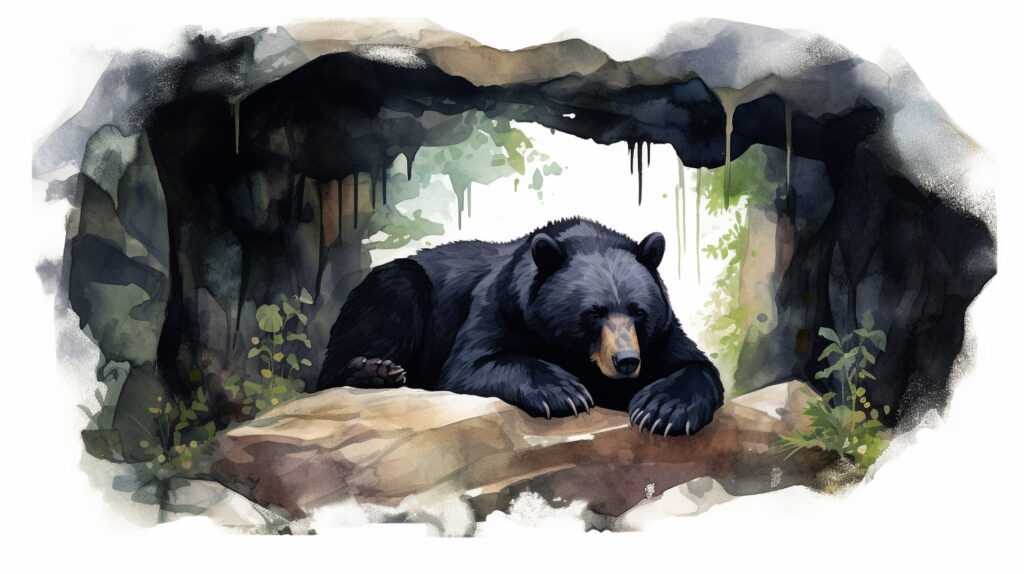
Despite their tough reputation, black bears don’t go into true hibernation. They find snug dens and enter a state of torpor. While their heart rate drops, and their metabolism slows, it’s not as profound as that of true hibernators. Unlike true hibernators, black bears can wake up more easily if disturbed. During this winter reprieve, female black bears may even give birth and care for their cubs in their den. Torpor helps them conserve energy and withstand the cold months, but they’re not in as deep a sleep as groundhogs or squirrels.
Eastern Chipmunk - Torpor
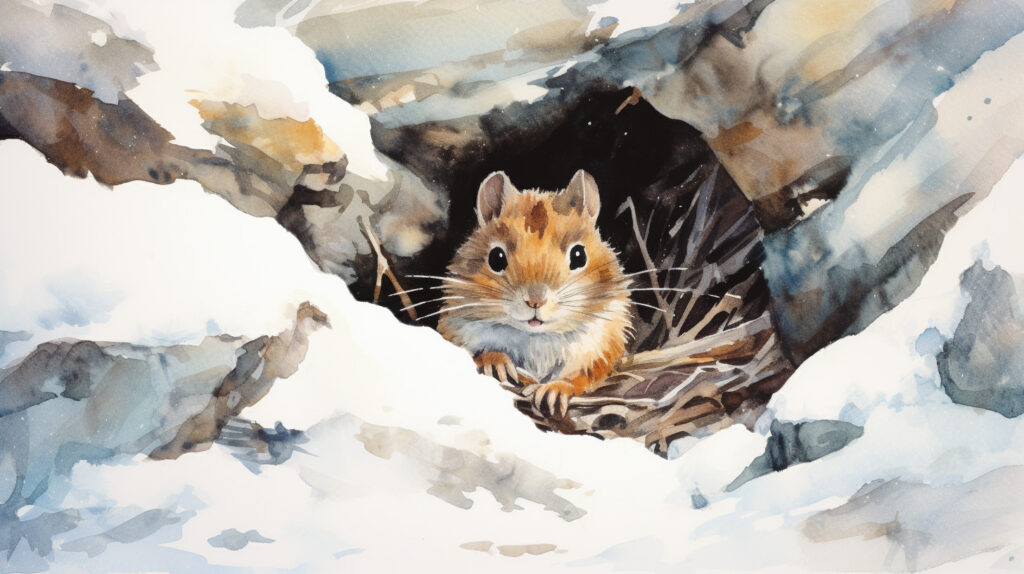
Say hello to our cheeky little friend, the Eastern chipmunk. Unlike true hibernators, chipmunks opt for a lighter version of hibernation known as torpor. They reduce their activity and become less responsive during the winter months, taking longer naps and showing a decreased interest in their surroundings. While they do lower their metabolic rate and conserve energy, they may wake up from time to time to snack on the food they diligently stored away before winter.
Little Brown Bat - Torpor & True Hibernation
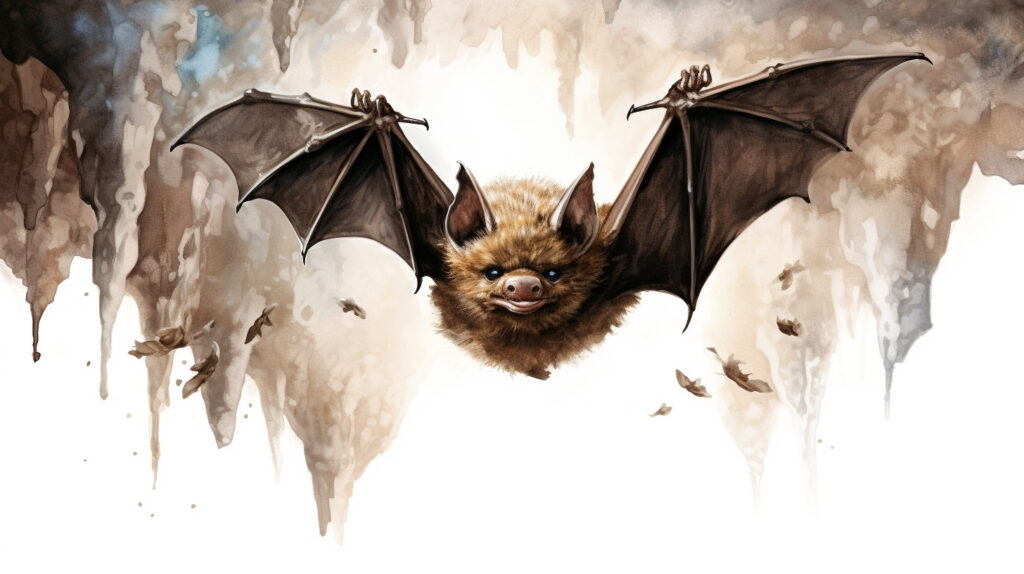
Nighttime navigators, bats take winter napping to the next level with torpor. They roost in caves, trees, or buildings, and take short daily naps to conserve energy. Hearts beat slower, and body temperature drops, allowing them to wake up each day with a burst of energy. Torpor helps them maintain their energy balance during the cold months when insects, their primary food source, are scarce.
Wood Frog - Torpor
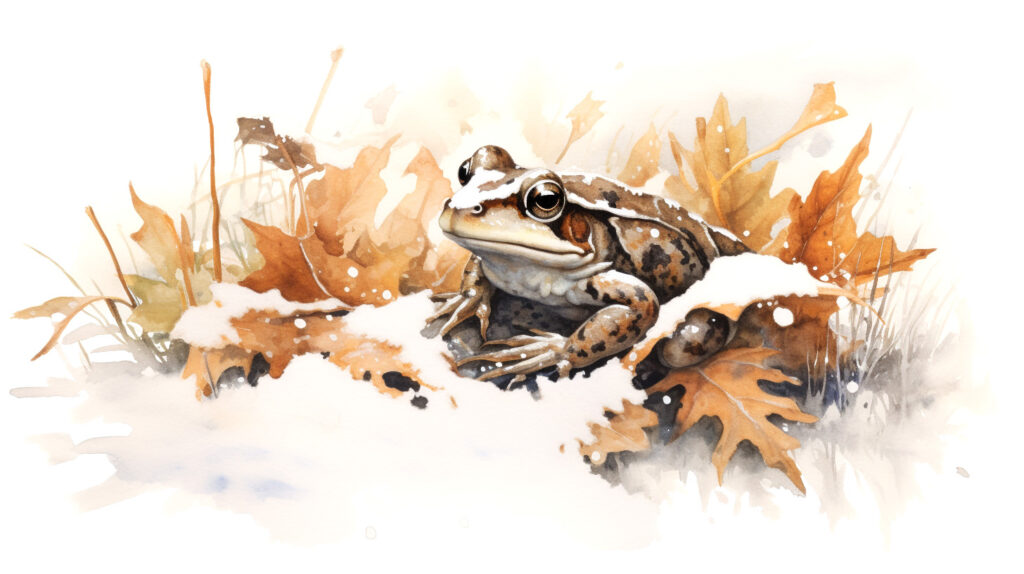
Hopping on to our next animal, we find the Wood Frog. The Wood Frog is a true master of torpor and endures a unique transformation. As winter approaches, their body temperature drops dramatically, and they enter a state of suspended animation. They might look like frozen frogs, and in some northern climates they acually do freeze solid! But come spring, they thaw out and hop back to life.
Northern Flying Squirrel - Torpor
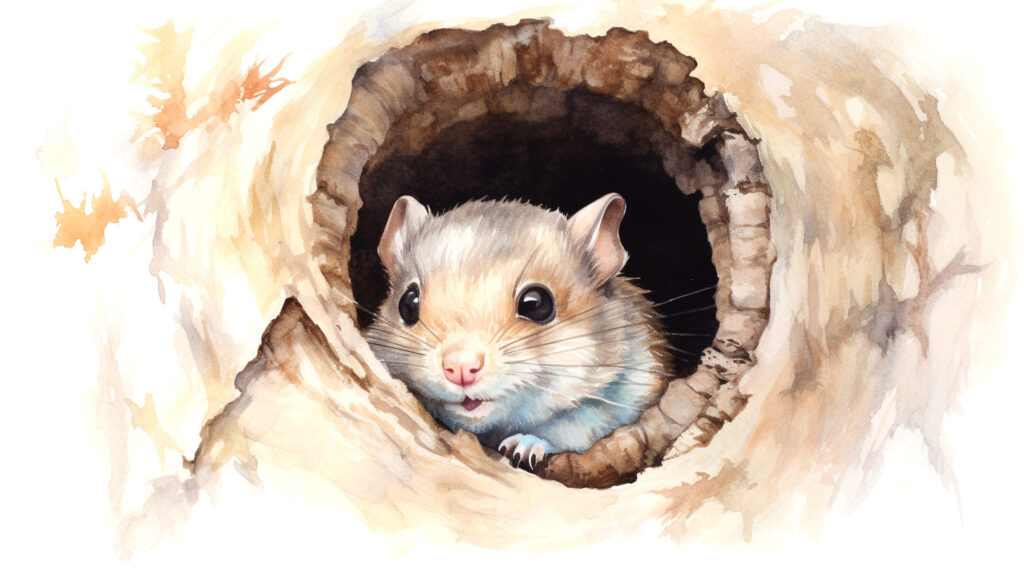
These aerial acrobats master the art of torpor. While they experience reduced activity and sleep more during the winter, they don’t enter the deep, uninterrupted sleep of true hibernators. Instead, they remain somewhat alert, allowing them to wake up if hunger strikes. Northern flying squirrels have an interesting adaptation—they use their fluffy tails to help stay warm during their semi-dormant state.
Brumation: Slumber in the Mud
BrumationBrumation is like a long, deep rest that some reptiles and amphibians take during the cold months to save energy. They stay in their cozy hideouts until it gets warmer in spring and they can come out feeling refreshed and ready to get back to their regular activities. is another captivating survival strategy, especially common among reptiles and amphibians. It’s a bit like a long, deep rest, somewhat similar to hibernation but with some differences. When animals enter brumation, they slow down their metabolism and become less active. This means their body functions, like digestion and movement, become much slower. Unlike hibernators, which often sleep deeply through winter, animals in brumation remain in a state where they can occasionally wake up and move around a little.
Eastern Box Turtle - Brumation & Aestivation
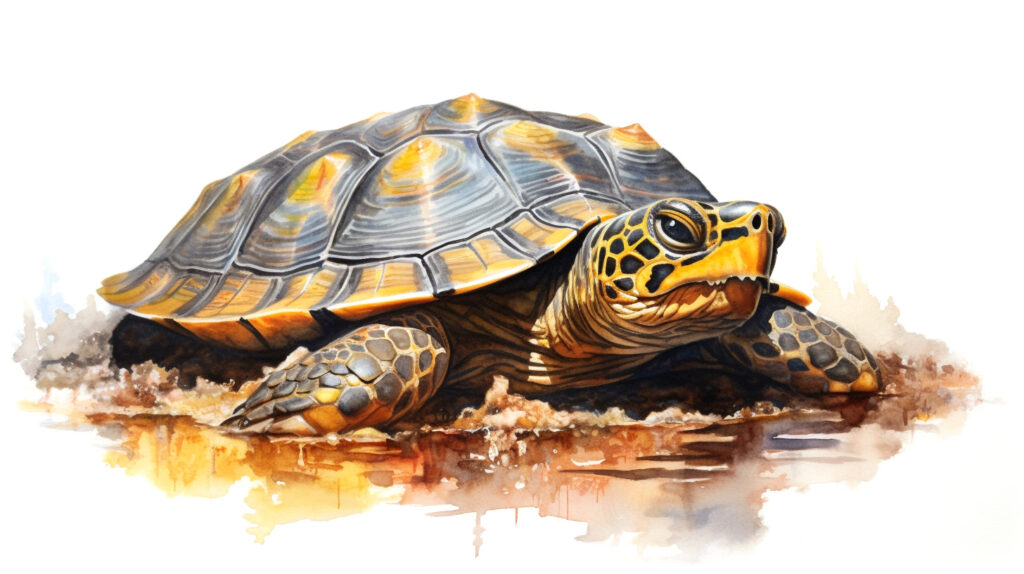
Now, let’s meet the wise Eastern box turtle. They don’t truly hibernate but instead enter a state of winter sleep referred to as brumation. These slow-moving reptiles burrow themselves into the mud at the bottom of ponds or lakes. While they become less active and conserve energy during this period, it’s not a true hibernation. They wait patiently for the arrival of warmer spring days, during which they will reemerge and become more active.
Eastern box turtles are also known to aestivateAestivation is a survival strategy used by some animals to endure extreme heat and drought during hot summer months. It’s like a break during the hottest part of the year when these animals slow down their activities, conserve energy, and wait for more favorable conditions, such as cooler weather or rain, to resume their normal routines. during extreme heat and droughtDrought is when a place doesn’t get enough rain for a really long time. It’s like having a super dry and parched period where there’s not enough water for plants, animals, or people. Droughts can be tough because they can lead to water shortages, affect farming, and impact the environment, making it harder for everything to thrive.. They seek shelter in burrows, leaf litter, or other cool and moist areas to conserve water and avoid dehydration.
Eastern Garter Snake - Brumation
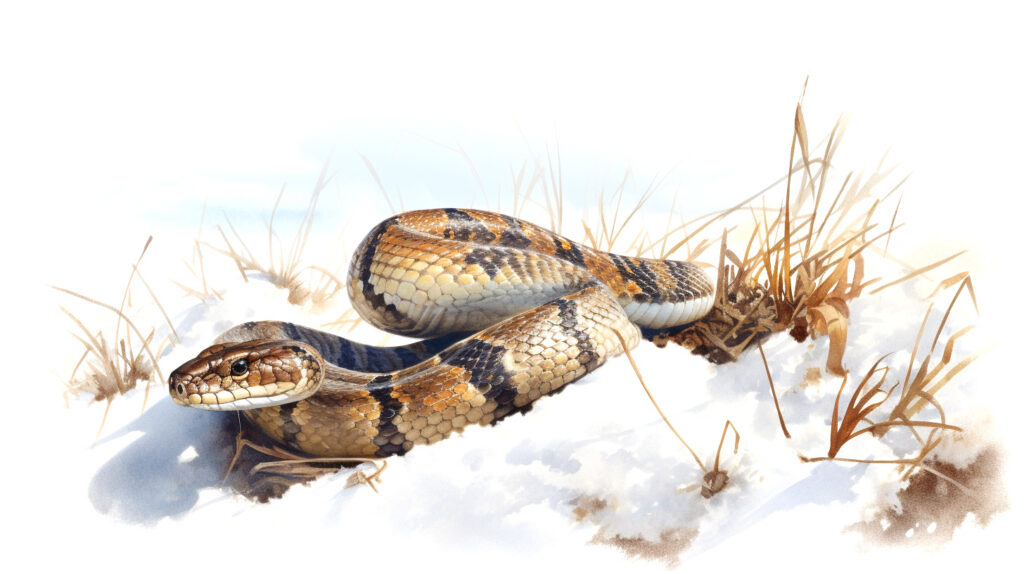
The Eastern Garter Snake has a cool way of dealing with winter. When it starts getting cold, these snakes gather with others in a comfy den, like a big sleepover. This is where they enter brumation, which is a super long, chill nap. During this time, their bodies slow way down. They don’t eat much, and their movements become sluggish. They also lower their body temperature to match the cold environment around them. This helps them save energy when it’s hard to find food. What’s interesting is that they’re not in a deep, deep sleep like some animals in hibernation. Sometimes they wake up and move around a bit in the den. When spring arrives, and the world warms up, they come out of their den feeling all refreshed and ready to get back to their usual snakey business. Brumation is a clever way for these snakes to handle winter and stay strong when things get warmer.
Aestivation: Escaping the Heat Through Slumber
Aestivation is a unique survival strategy employed by some animals to endure extreme heat and drought during scorching summers. It’s like taking a break during the hottest part of the year to conserve energy and stay cool. Aestivating animals find a cozy spot, slow down their metabolism, and wait patiently for more favorable conditions, such as the return of cooler weather or life-giving rains, to resume their normal activities.
American Snail - Aestivation
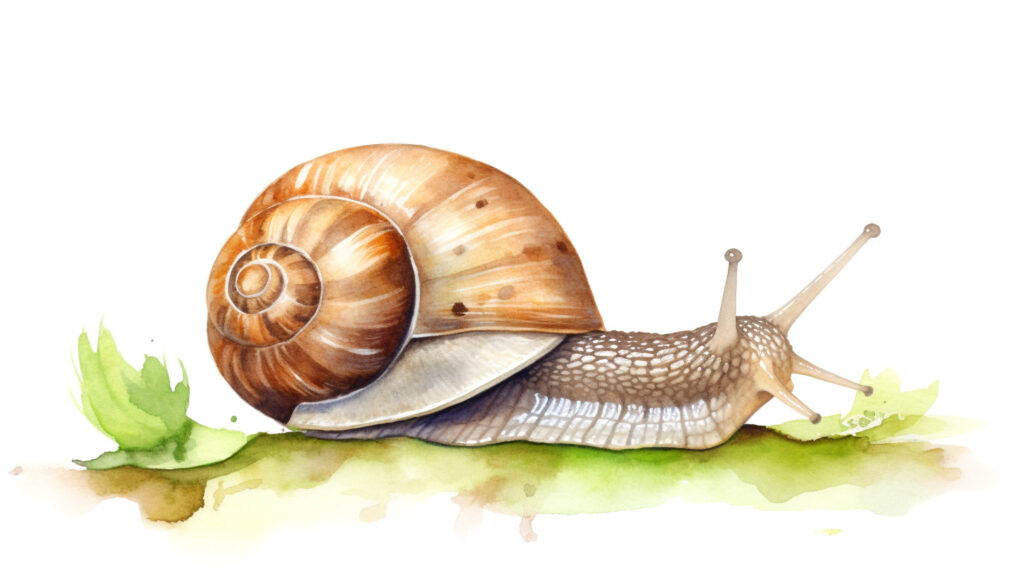
When the scorching summer sun scorches the earth, some snails enter a state of aestivation. Aestivation is the hot-weather counterpart of hibernation, and it helps these snails conserve moisture and energy during the dry season. They find a cozy spot, seal themselves in their shells, and wait for the life-giving rains to return. Aestivation allows them to survive in arid conditions, where water is scarce.
Plains Spadefoot Toad Tadpoles - Aestivation
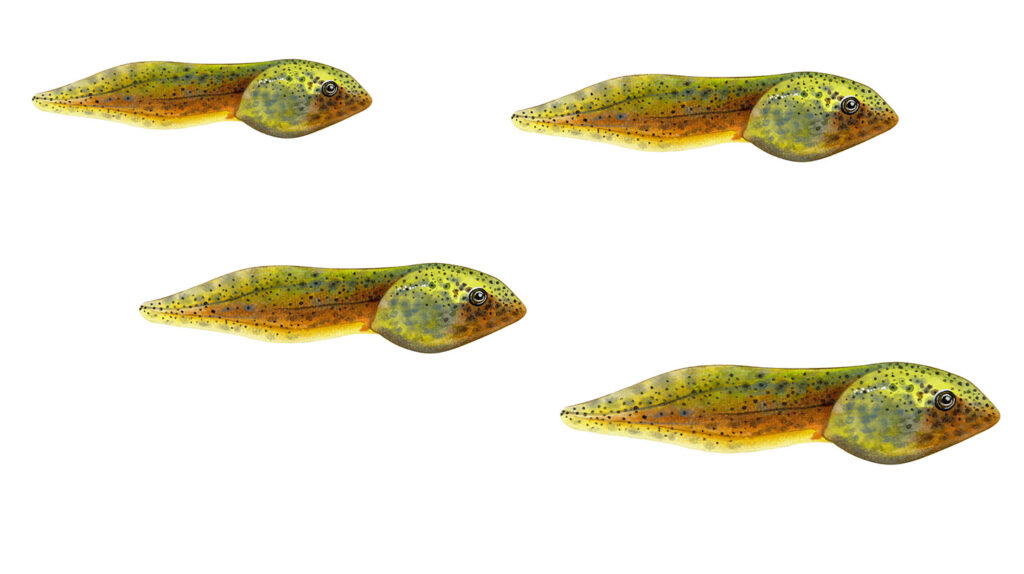
Spadefoot toad tadpoles are perhaps the most well-known aestivating tadpoles in North America. These tadpoles live in temporary pools and ponds in arid regions. When their aquatic habitats start drying up, they can undergo aestivation by burrowing into the mud, where they form a protective cocoon. They remain in this state of dormancy until the rains return and refill their breeding ponds.
Diapause: The Insect Version Of Hibernation
Diapause is a fascinating phenomenon primarily observed in insects and some other tiny creatures. It’s like pressing the pause button on their lives. During diapauseDiapause is a kind of time-out in the life cycle of some insects and small creatures. During diapause, certain life stages, like eggs or pupae, temporarily stop developing and stay inactive, allowing them to survive harsh conditions until the environment becomes more favorable for growth., certain life stages of these animals, like eggs or pupae, go into a state of dormancy, which means they temporarily stop growing and developing. This remarkable adaptationAn animal adaptation is a physical feature or a specific behavior that allows it to better survive in its environment. helps them cope with changing environmental conditions. They essentially wait for more favorable circumstances to continue their life cycles.
Ants - Diapause
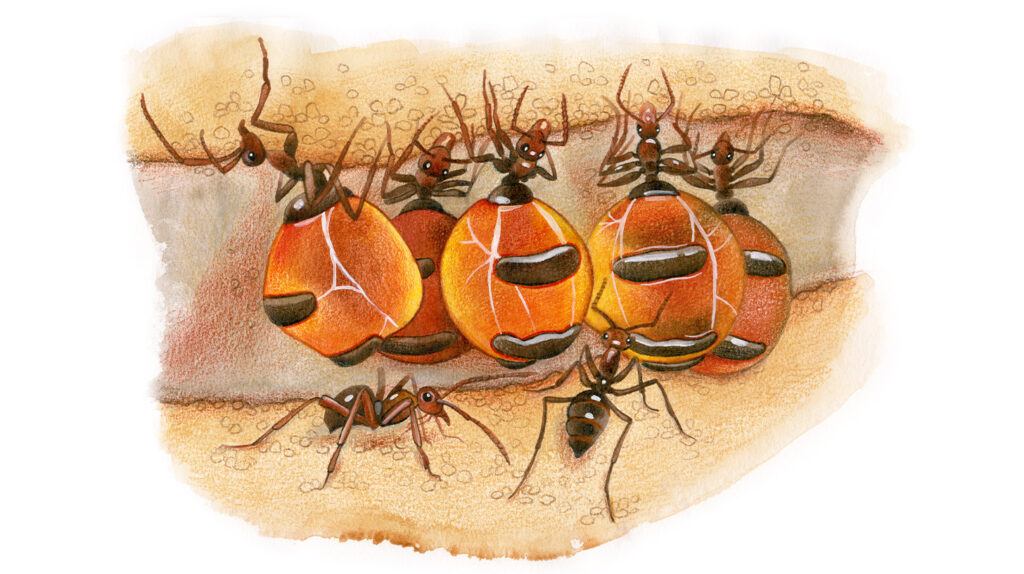
Ants, those tiny but mighty insects, have a unique survival strategy called diapause. When conditions become challenging, such as during drought or harsh winters, certain life stages of ants, like their eggs or pupae, enter diapause, which is like hitting pause on their development. During diapause, these ant life stages stop growing and remain dormant. This clever adaptation helps ants cope with tough times, ensuring that their offspring don’t hatch or develop when the environment is unfavorable or when resources are scarce. When conditions improve, like when there’s enough food or water, ants come out of diapause, and the eggs or pupae resume their development, hatching into young ants ready to face the world. Diapause is like a safety net that allows ants to thrive in ever-changing and sometimes challenging environments.
As we conclude our journey through the mesmerizing world of animal hibernation, remember the incredible adaptability of these creatures, each with its unique strategy to overcome the challenges posed by harsh seasons and changing environments. Nature’s lessons are profound, teaching us resilience, adaptation, and the beauty of survival in the wildest of settings. The next time you venture into the great outdoors, take a moment to appreciate the remarkable tales of hibernation happening all around us.

DISCUSSION
DISCUSSION
DISCUSSION
FOLLOW-UP TOPICS
Science Topics
Why Do Animals Hibernate?
- Initiating the Conversation: Begin by asking, “Why do you think animals hibernate during winter?”
- Discussion Prompts: Discuss the reasons behind hibernation, such as conserving energy and surviving harsh conditions. Explore the concept of adaptation and how animals have evolved to cope with changing seasons.
- Learning Objective: Understand the purpose and benefits of hibernation as a survival strategy for animals in different environments.
Comparing Hibernation Strategies
- Initiating the Conversation: Present a few different animals that hibernate and ask, “Can you compare how these animals hibernate?”
- Discussion Prompts: Compare and contrast the hibernation methods of various animals, discussing differences in body temperature, duration of hibernation, and behavior during hibernation.
- Learning Objective: Develop critical thinking skills by analyzing and contrasting different hibernation strategies in the animal kingdom.
The Impact of Hibernation on Ecosystems
- Initiating the Conversation: Discuss how hibernating animals affect their ecosystems by saying, “How do you think the hibernation of certain animals can impact the the ecosystem they live in? How does it impact the food chain?”
- Discussion Prompts: Explore the ecological roles of hibernating animals, including their interactions with other species, seed dispersal, and soil aeration. Discuss the potential consequences if certain hibernators were absent.
- Learning Objective: Understand the interconnectedness of species and how hibernation plays a role in maintaining ecosystemAn ecosystem is a community of living organisms, like insects and birds, and non-living components, like water and rocks, that interact with each other in a specific area. Learn More balance. Encourages a multi-level thought process, as they try to trace the effect of the partial or total disappearance of an animal within their ecosystem.

There’s a lot to explore right where we are, in our own neighborhoods and backyards! Join us while we get off the couch and explore the everyday wonders of nature, science, space, engineering, art, and anything else we stumble upon during on our adventures.


